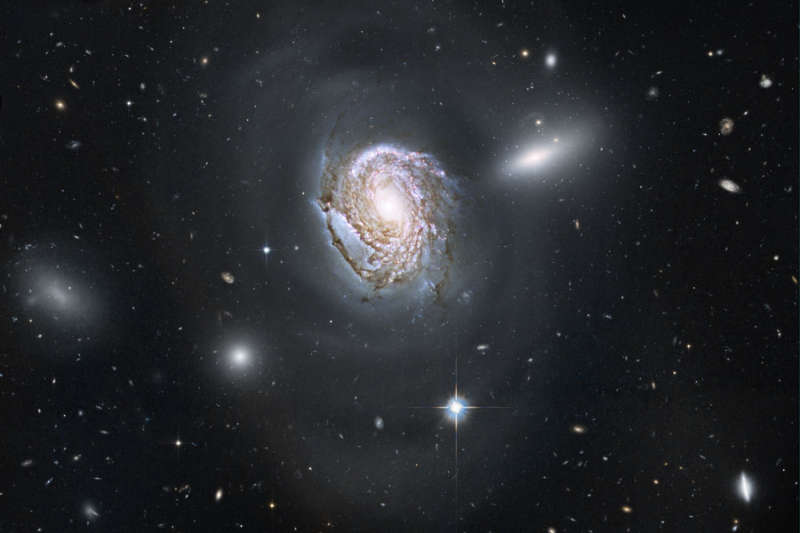Credit & Copyright: NASA,
ESA, and the
Hubble Heritage Team
(STScI/AURA);
Acknowledgment:
K. Cook
(LLNL)
et al.
Explanation:
Why are there faint rings around this spiral galaxy?
Possibly because the galaxy,
NGC 4911, is being pulled
at by its neighbors as it falls into the enormous
Coma Cluster of Galaxies.
If NGC 4911 ends up like most of the galaxies in the
central Coma cluster, it will become a yellowish
elliptical galaxy,
losing not only its outer layers, but dust, gas, and its cadre of surrounding
satellite galaxies
as well.
Currently, however,
this process is just beginning.
Visible in the above deep image from the
Hubble Space Telescope are NGC 4911's bright nucleus, distorted spiral arms
laced with dark dust, clusters of recently formed stars, unusual faint outer rings,
dwarf companion galaxies, and even faint
globular clusters of stars.
Far in the distance many unassociated galaxies
from the early universe are visible, some even through
NGC 4911 itself.
The Coma Cluster contains over 1,000
galaxies making it among the most massive objects known.
NGC 4911 can be found to the lower left of the great cluster's center.
1999 2000 2001 2002 2003 2004 2005 2006 2007 2008 2009 2010 2011 2012 2013 2014 2015 2016 2017 2018 2019 2020 2021 2022 2023 2024 2025 |
Yanvar' Fevral' Mart Aprel' Mai Iyun' Iyul' Avgust Sentyabr' Oktyabr' Noyabr' Dekabr' |
NASA Web Site Statements, Warnings, and Disclaimers
NASA Official: Jay Norris. Specific rights apply.
A service of: LHEA at NASA / GSFC
& Michigan Tech. U.
|
Publikacii s klyuchevymi slovami:
Coma Cluster - spiral galaxy - galactic cluster - Skoplenie galaktik - Volosy Veroniki - spiral'naya galaktika
Publikacii so slovami: Coma Cluster - spiral galaxy - galactic cluster - Skoplenie galaktik - Volosy Veroniki - spiral'naya galaktika | |
Sm. takzhe:
Vse publikacii na tu zhe temu >> | |
